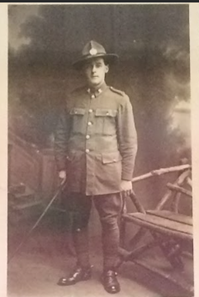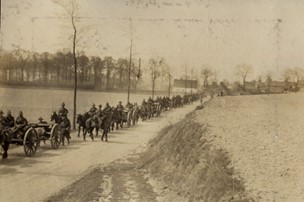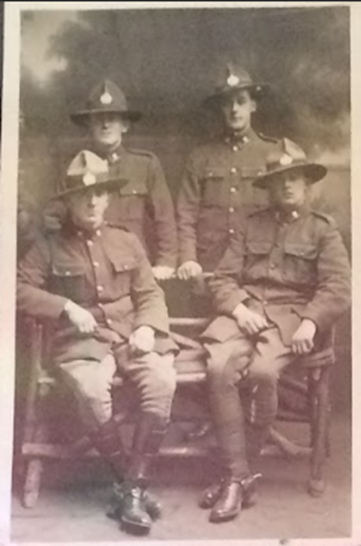Weaver Close, Alexandra NZ. Location: 45.241539,169.378440
Trooper Charles Leslie Weaver (known as Leslie) 9/890. served first as a Trooper in the Otago Mounted Rifles and then as a Driver and Gunner in the 3rd Battalion of the New Zealand Divisional Artillery Column. He saw action in Egypt, the Balkans and on the Western Front.

Leslie Weaver was born in Clyde on the 9th Aug 1893 and was the third son of five, plus two sisters. His family’s establishment in the district followed a familiar pattern for the times. His grandfather came over from the Victorian goldfields when his father, Patrick, was a child and the family moved from gold mining to dredging and finally into orcharding. Leslie states his occupation as fruit-grower in his enlistment papers. Also of interest in these papers is the fact that he had done some compulsory military service with the Dunedin City Guard.
Leslie signed up in Dec 1914 as part of the Otago Mounted Rifles. The Otago Mounted Rifles served as a standalone unit, and were never part of the New Zealand Mounted Rifles Brigade. The O.M.R’s first major campaign was in fact on-foot as part of the New Zealand and Australian Division at Gallipoli. Leslie’s war records show he was evacuated from there on the HMS Guilford Castle, suffering from severe dysentery, and spent time in Bethnal Green Hospital. After a short stint in Egypt, April 1916 saw the Otago Mounted Rifles moved to the Western Front where the trench warfare offered very little opportunity to serve as mounted riflemen. They mostly undertook labouring and support work and this is where Leslie was moved to the New Zealand Divisional Artillery Column. This saw him working as a Driver to transport ammunition from shell dumps to behind the line’s positions. His records show he was assigned to the 3rd Battalion, who were involved in the following battles; Somme (1916), Messines (1917), Passchendaele (1918) and the Spring Offensive (1918) His record also shows that mid 1918 he was posted to the 11th and then 12th Battery meaning he moved from Driver to Gunner at this time. He was posted back to Sling Camp in the UK on 28th Jan 1919 and returned to New Zealand on the H.M.S. Kia Ora on the 27th May 1919, having served a total of 4 years and 46 days overseas. His war record only contains one conduct offence and that was overstaying leave on the 11th Aug 1917. He was docked two days pay and we can perhaps assume this small incident may have been connected to his 24th birthday on the 9th August.


Like many, Leslie did not enjoy a long and healthy life on his return and died on the 17th August 1921 from TB. The short announcement of his passing, in the Dunstan Times, describes him as, ‘a favourite with everybody’ and ‘his happy, kindly disposition endeared him to all’. It also mentions that he had spent a considerable amount of time in Dunstan Hospital since his return from the war and had only recently been moved to his parents home in Port Chalmers, where he passed away. He was given a full military funeral in Alexandra with the Dunstan Times recording, “a big attendance, with people being present from all around Central Otago’.
Patrick and Lilly Weaver had only just lost another son, Peter, who had returned from the war but then died at home on the 13th September 1919, aged 24. He had been awarded the Distinguished Conduct Medal for, “gallantry and devotion to duty pushing forward to within a few 100 metres of a village, crossing several areas swept by machine gun fire, in returning he managed, despite his own wound, to get his comrade safely back to our lines.’ Another son, John, also returned safely, having been awarded the the D.C.M and then the Meritorious Service Medal for, “gallant conduct on the 8th Nov 1918 when with a patrol of two men, he galloped across country to draw hostile machine gun fire and disclose machine gun positions”.

QR Code for this webpage




